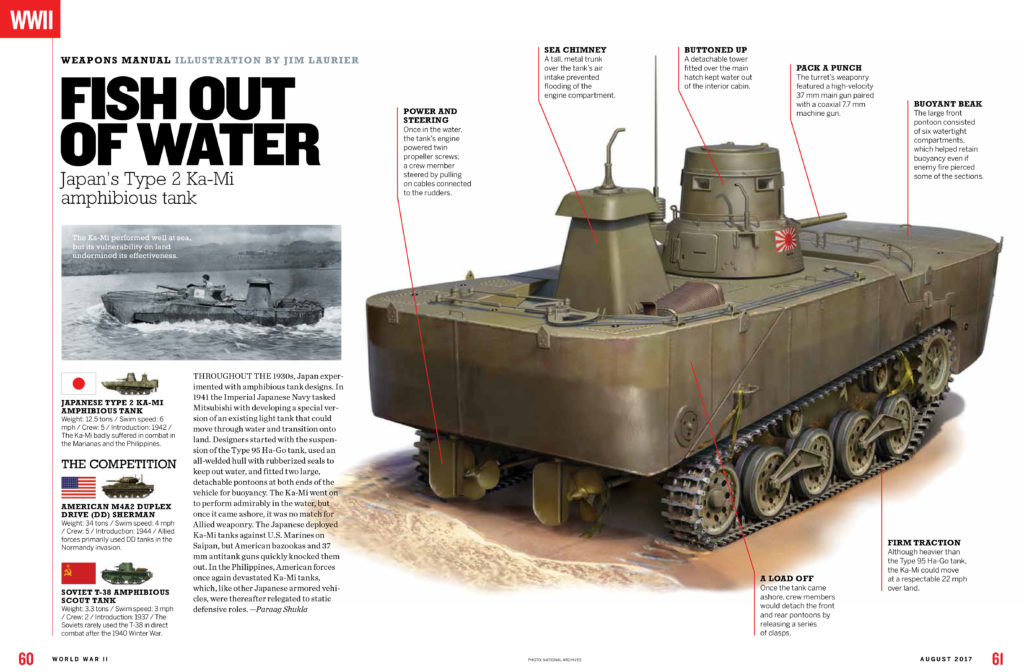Throughout the 1930s, Japan experimented with amphibious tank designs. In 1941 the Imperial Japanese Navy tasked Mitsubishi with developing a special version of an existing light tank that could move through water and transition onto land. Designers started with the suspension of the Type 95 Ha-Go tank, used an all-welded hull with rubberized seals to keep out water, and fitted two large, detachable pontoons at both ends of the vehicle for buoyancy. The Ka-Mi went on to perform admirably in the water, but once it came ashore, it was no match for Allied weaponry. The Japanese deployed Ka-Mi tanks against U.S. Marines on Saipan, but American bazookas and 37 mm antitank guns quickly knocked them out. In the Philippines, American forces once again devastated Ka-Mi tanks, which, like other Japanese armored vehicles, were thereafter relegated to static defensive roles.






